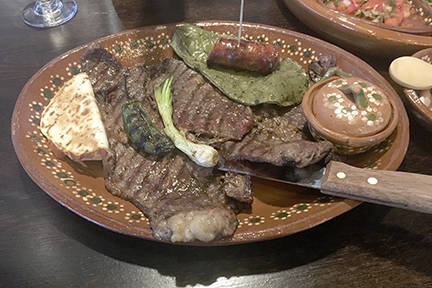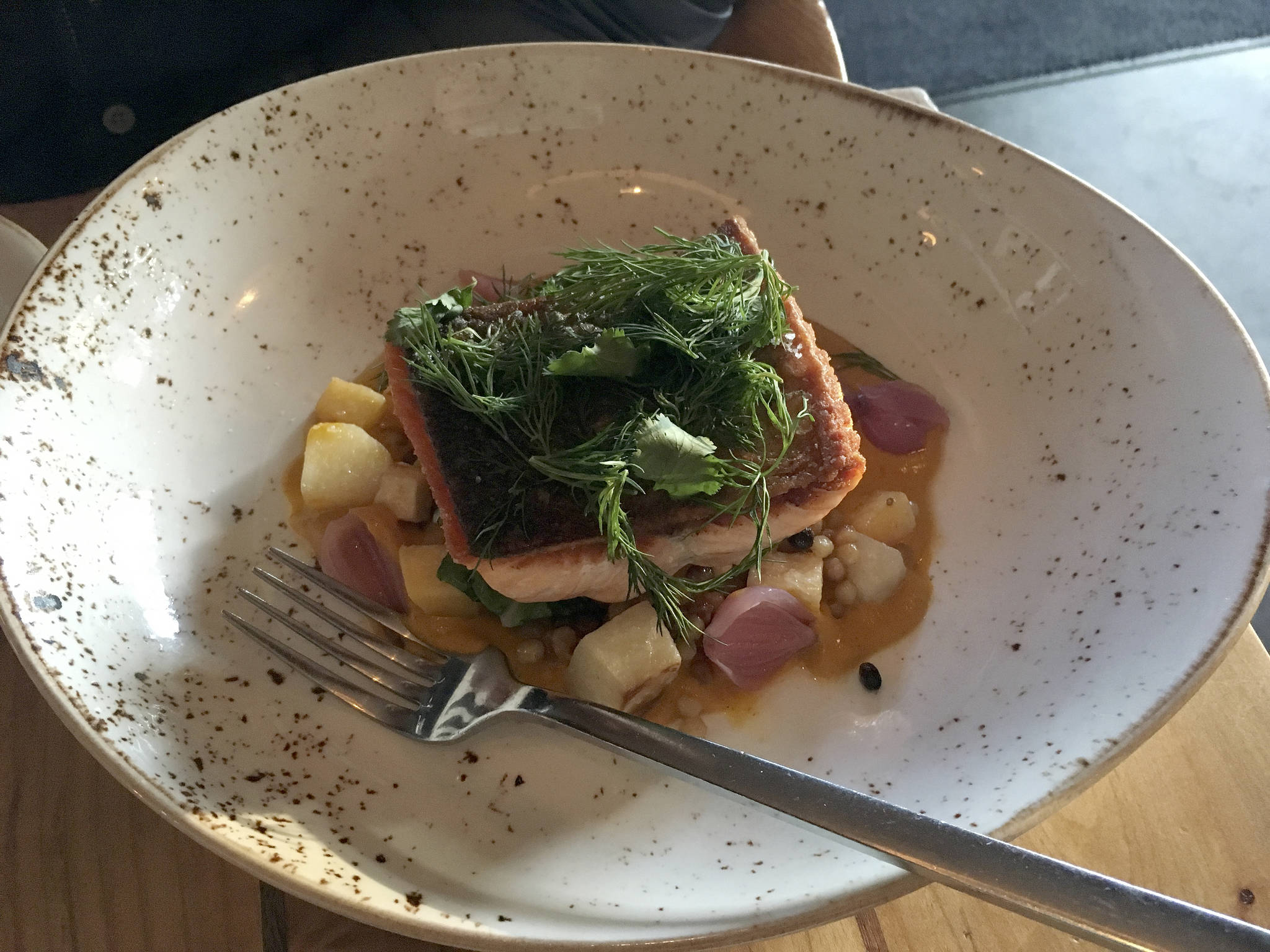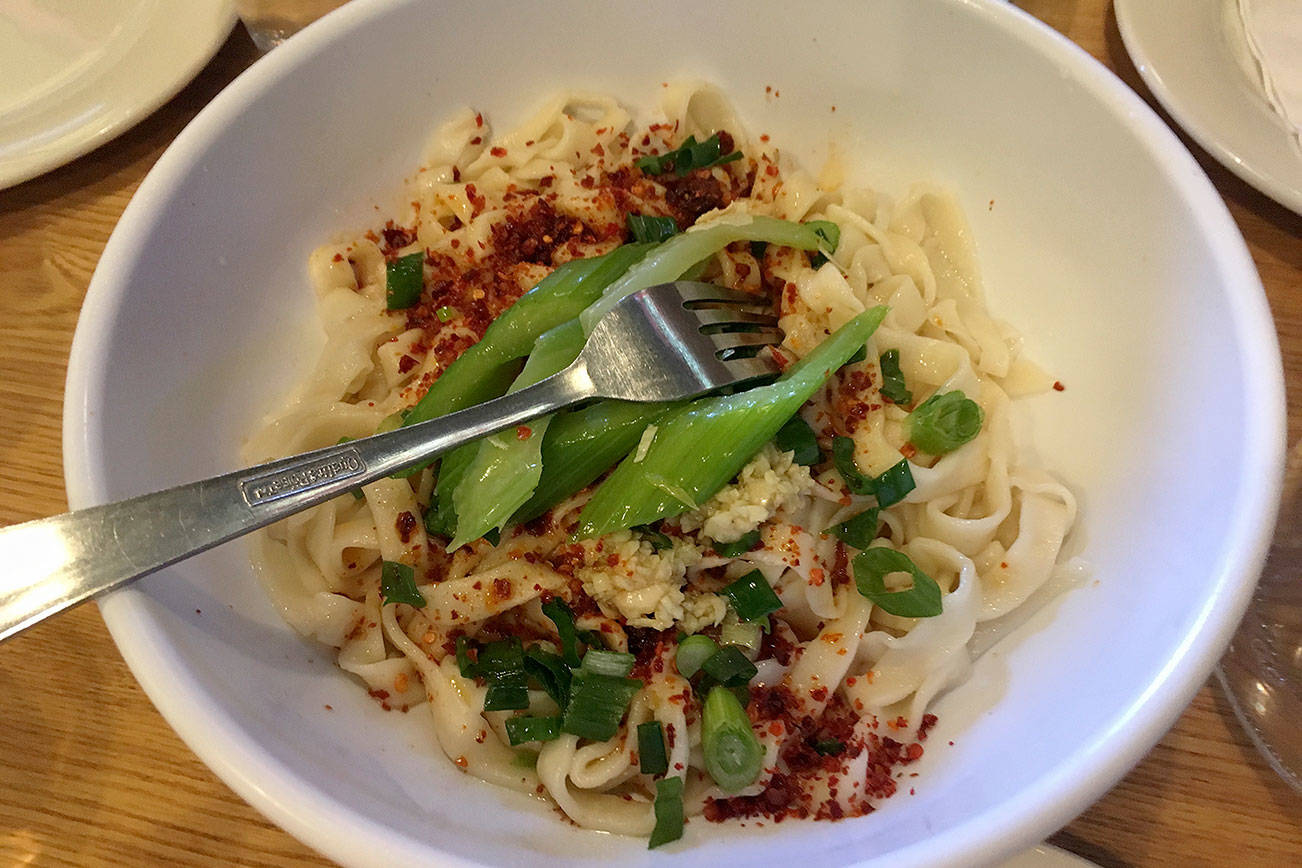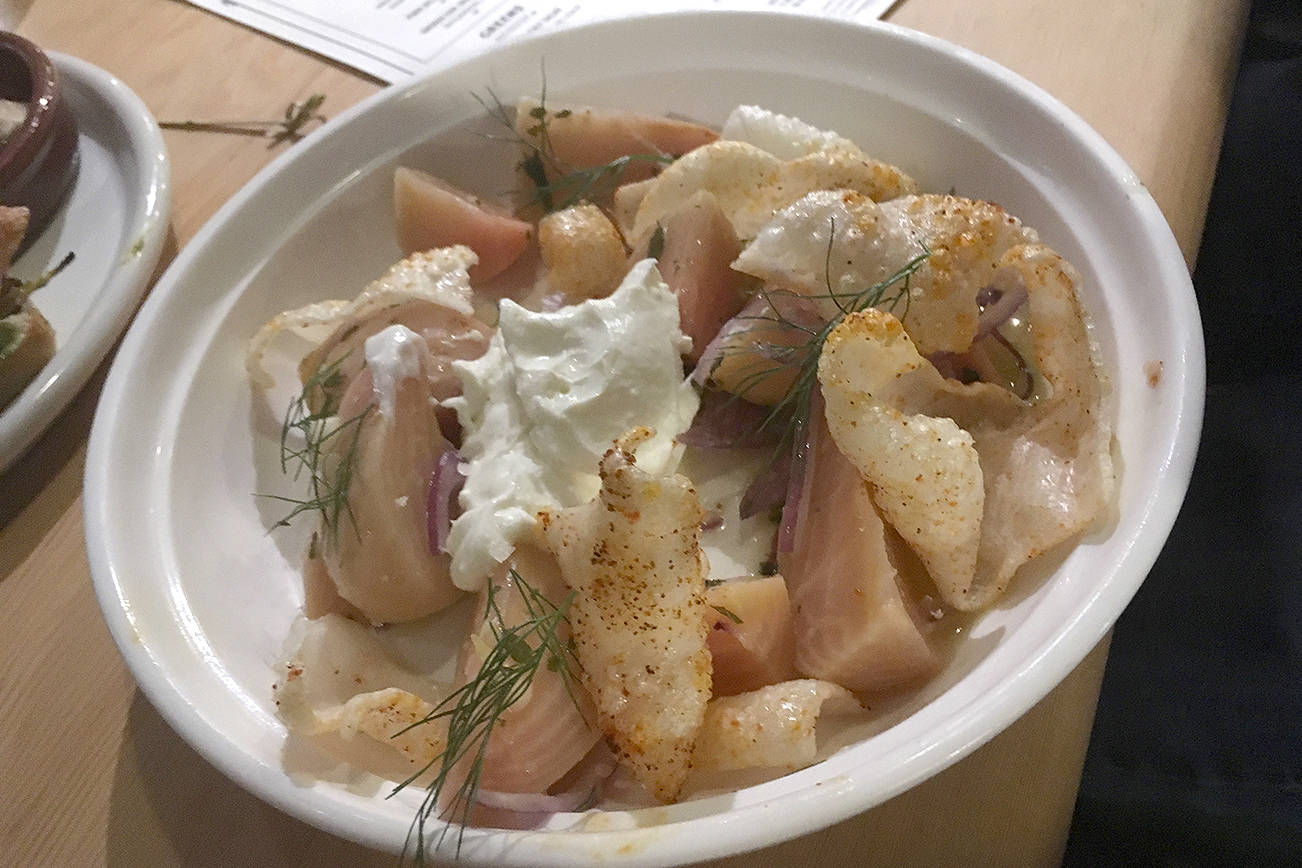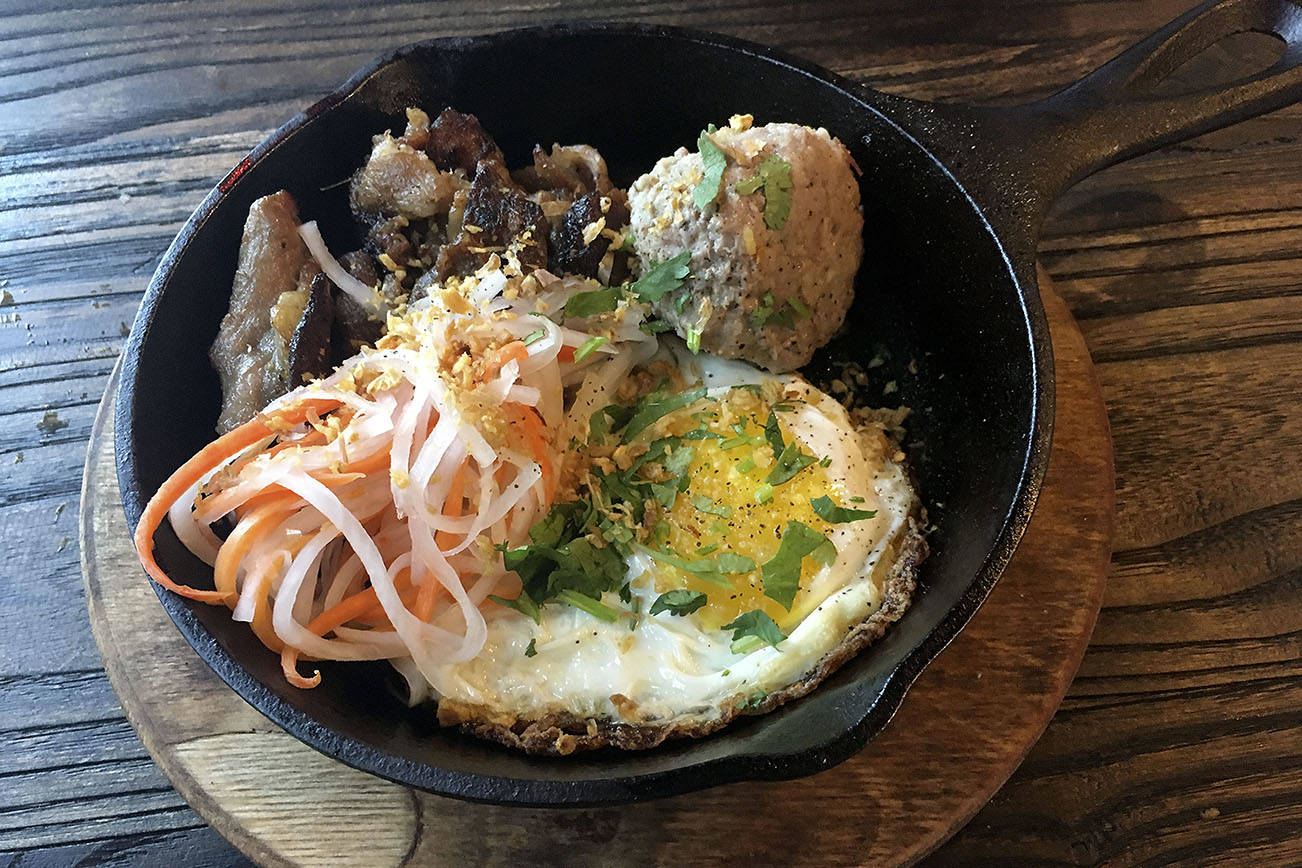There are two trends going on in Mexican food in Seattle of late. One is fusion, with an emphasis on non-traditional sauces and preparations. The other is the Mexican-style steakhouse where steaks of various cuts come on platters to be sliced up yourself and added to accompanying tortillas and garnished with a bevy of condiments. Asadero Sinaloa in Ballard is one example of the latter; another is the newly-opened D’ La Santa (2359 10th Ave. E, 709-2222) on the edge of Eastlake, where the inspiration comes from Guadalajara.
The centerpiece of the large airy space is a lovely “tree” crafted from various size slats of light, honey-hued wood—hanging from its branches are woven, basket-lights. One wall displays crosses of various colors and materials, and a beautiful, blown-glass heart faces outward from a wall in the back. The rest is clean white walls, punctuated with red banquettes. In the hall near the bathroom are framed newspaper clippings offering the reward for the capture of Pancho Villo and his partner, Muere Zapata.
As for the menu, there are traditional “platos” as well as the “cartes” (steaks). As for the latter, they are all USDA prime and run the gamut from $19 short ribs to the $90 “Tomahawk,” a 44-ounce cut. In between: a rib eye, a Porterhouse, a New York Prime Delmonico, even Wagyu, each with its own accompaniments. We opted for the Wagyu carne asada ($29.99) and the thinly-sliced meat had the rich, fatty character one expects from Wagyu, and came with a large slice of grilled cactus, whole pinto beans, a spicy chunk of chorizo, a cheese quesadilla, a blistered green onion and a roasted salsa. Plus, an entire plate of additional garnishes come out as well: sliced radishes, pickled onions, raw onions, chopped cilantro, pico de gallo, and a tomatillo salsa. Getting a bit of everything onto a tortilla is a challenge, but worth the work. All of the flavors meld nicely, and it’s a great way to appreciate good meat.
You need not go the steak route, though, since the restaurant also offers plenty of other options. There’s the “Chile en Nogado,” a traditional Mexican dish that dates back to 1821 according to the menu, and consists of an extra-large poblano pepper stuffed with ground beef, chicken, and pork, seasoned with green apple, plantain, walnuts, almonds, pine nuts, bacon, and ham, and covered in a wine cream sauce dotted with pomegranate seeds. It’s on the rich side, as you might imagine, and rather sweet for my taste. Plus, the meat inside was a bit dry. If you’re interested in trying it, I’d treat it as an appetizer and share it among your fellow diners. On its own, it’s too one-note, but a bite here and there would be enjoyable. What did stand well as a complete dish was the “cochinita pibil,” the Yucatan specialty in which pork is marinated in achiote pepper and sour orange juice and cooked in banana leaves. The pork was especially succulent, the flavors strong but balanced. The black bean puree it came with, along with the pickled onions in thyme, assisted beautifully and made for a terrific package tucked in a warm tortilla.
With so much food, we opted to go easy on appetizers, though we did order the “arroz del dia,” described as rice cooked in a creamy verde sauce with corn and poblano pepper. I didn’t find much trace of the richness I expected. It seemed more or less like plain rice with some corn mixed in. The server recommended the guacamole and the “rajitias”: fire-roasted poblano peppers with corn and cream sauce. Maybe next time. Speaking of service, it’s extremely warm and helpful.
Cocktails here don’t try to reinvent the wheel. There are five of them, including a margarita and sangria. That said, they look mighty. The table next to us ordered some, and they came in ornate, massive goblets that looked like they’d pack a punch—or two.
Overall, I’m a fan of this platter-style Mexican dining. It feels more like a real dinner than the usual tacos, and it’s great to have different regional styles proliferating around the city.
nsprinkle@seattleweekly.com
